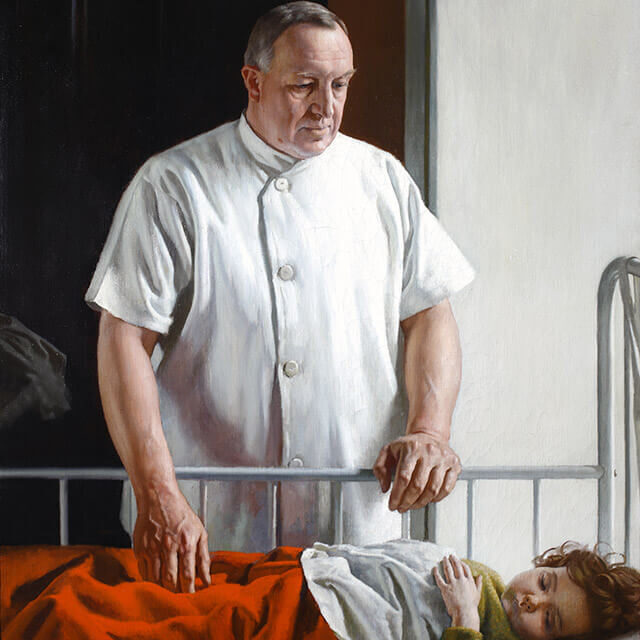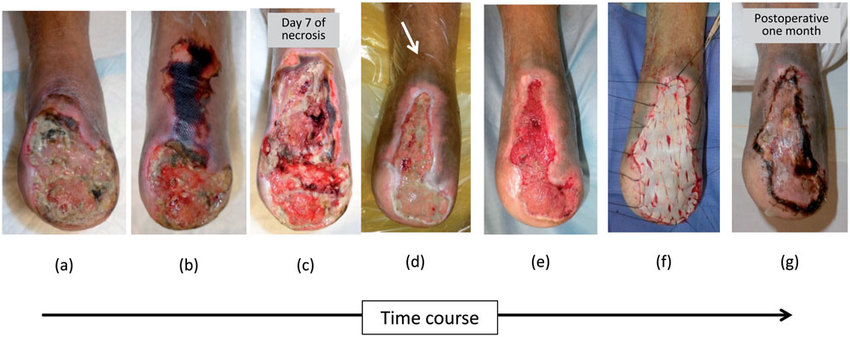Content by: Ashish Aryan, Mariyah Haji
Design by: Aarushi Tripathi
Webpost by: Medha Chatterjee


Imagine a treatment so unconventional, so seemingly outlandish, that it defies modern sensibilities: maggots healing wounds. Yes, you read that correctly. These seemingly repulsive creatures have been silently revolutionizing wound care for centuries, proving their worth across cultures and eras.
From the ancient Mayans, Native Americans, and Australian Aboriginal tribes to the battlefields of the Renaissance, maggots have been unsung medical heroes. Picture Napoleon’s chief surgeon, Baron Dominique Larrey, during the French campaign in Egypt and Syria, marvelling as maggots devoured dead tissue, leaving healthy flesh untouched. Fast forward to the American Civil War, where Confederate medical officers like Joseph Jones and Dr. J.F. Zacharias were astounded by maggots’ ability to clean wounds more effectively than any known treatment, saving countless lives.


The saga continued into the 20th century. In the chaos of World War I, orthopedic surgeon William S. Baer discovered a soldier, left for days on the battlefield with severe wounds, miraculously free from infection thanks to maggots. This led Baer to champion maggot therapy at Boston Children’s Hospital. Even during World War II, American prisoners of war, deprived of medical supplies, turned to maggots, witnessing their extraordinary healing power firsthand.
These remarkable creatures, often dismissed as mere pests, have proven to be indispensable allies in the battle against infection and disease. Their story challenges our perceptions and beckons modern medicine to embrace the extraordinary.
In this edition of Monthly Marvel will dive deeper into this story.
What exactly is Maggot Therapy?
Maggot therapy, also known as maggot debridement therapy (MDT), is a medical treatment involving the deliberate application of live, sterile maggots (fly larvae) to non-healing wounds. The primary goal is to clean the wound by removing necrotic (dead) tissue, disinfect the wound area, and promote the healing process.

Mechanism of Action
How Do Maggots Clean Wounds?
Debridement
Maggots are highly efficient at debridement and removing dead or necrotic tissue, which is crucial for wound healing. They secrete a cocktail of proteolytic enzymes such as collagenase, serine proteases, and metalloproteases, which break down dead tissue into simpler compounds that the larvae can ingest. This enzymatic degradation process ensures that only necrotic tissue is consumed, sparing the healthy tissue and creating a cleaner wound bed conducive to healing.

How Do Maggots Help Fight Infection?
Antimicrobial Activity:
In addition to debriding wounds, maggots secrete antimicrobial substances that help control and reduce infection. Their secretions include allantoin, urea, phenylacetic acid, and phenylacetaldehyde, which have broad-spectrum antimicrobial properties. These substances inhibit the growth of both Gram-positive and Gram-negative bacteria, including antibiotic-resistant strains like MRSA (Methicillin-resistant Staphylococcus aureus).
Immune System Modulation:
Maggot secretions have been found to modulate the host’s immune response. Studies suggest that these secretions can reduce excessive inflammation, which is often detrimental in chronic wounds. By dampening the inflammatory response, maggots create a more balanced environment that supports tissue repair and regeneration.
Where do the maggots come from?

Therapeutic maggots are mass-produced in special units by highly trained staff. For instance, the Chelsea and Westminster NHS of the UK sources them from Biomonde, a local company with many years of experience in wound management.
How Are Maggots Applied to the Wound?
There are two conventional methods of application:
BioBag dressing:
The maggots are sealed within a dressing, which is a finely woven net pouch containing a small piece or pieces of foam, which aid the growth of the maggot and manages exudate. The BioBag dressings come in different sizes and are applied according to the nature and size of the wound being treated. The maggots remain sealed within the dressing throughout the treatment.

Free-range maggots:
The maggots are applied directly onto the wound and retained within a special dressing system. The exact nature of this is determined by the size and location of the area to be treated.

How Long Does the Therapy Last?
The duration of maggot therapy varies with the type of maggots and the method of application being used, but it typically lasts 48 to 72 hours per session.
BioBag dressings can be left in place for up to four days—it is possible for the dressing to be removed on a daily basis to allow inspection of the wound site.
‘Free range’ maggots are generally left in place for up to three days before being removed from the wound site. With both application methods, it is impossible to predict how long a course of treatment will take. Sometimes, a wound is entirely cleansed by a single application of maggots, but other wounds may require two or more treatments to achieve the desired effect.

What Makes Maggot Therapy Effective?
Maggots used in therapy, particularly those of the green bottle fly (Lucilia sericata), exhibit a unique ability to debride necrotic tissue selectively. This selectivity is vital for several reasons:
- Preservation of Healthy Tissue: Traditional debridement methods, such as surgical or mechanical debridement, often risk damaging healthy tissue alongside necrotic tissue. Maggots, however, produce enzymes that specifically target and break down dead tissue without harming viable tissue. This selective action ensures that only the unhealthy portions are removed, preserving as much healthy tissue as possible.
- Optimal Wound Bed Preparation: By precisely removing necrotic tissue, maggots create a clean wound bed that is better suited for subsequent healing stages. This preparation promotes granulation tissue formation and re-epithelialization, critical steps in the wound healing process.
- Reduced Pain and Trauma: Because maggot debridement is selective and less invasive, it tends to be less painful and traumatic for patients compared to more aggressive methods. This can improve patient compliance and overall comfort during treatment.
Benefits of MDT
Lower Cost of Biological Agents: Maggots are relatively inexpensive to produce and maintain. The cost of breeding and disinfecting maggots for therapeutic use is significantly lower compared to many advanced wound care products and technologies. This makes maggot therapy a financially viable option for both healthcare providers and patients.
Reduced Need for Surgical Interventions: By effectively debriding wounds and promoting faster healing, maggot therapy can decrease the need for expensive surgical interventions. Surgeries for wound management can be costly regarding the procedure and considering the associated hospital stays, anaesthesia, and postoperative care.
Shorter Healing Times: Maggot therapy can accelerate the healing process, leading to shorter treatment durations. Faster wound healing translates to fewer medical visits, reduced need for ongoing wound care supplies, and less time off work for patients, all of which contribute to overall cost savings.
Decreased Use of Antibiotics: Effective infection control through maggot therapy reduces the reliance on systemic antibiotics, which are often costly. Additionally, minimizing antibiotic use helps lower the incidence of antibiotic resistance, potentially saving future costs associated with treating resistant infections.
CONCLUSION: Maggot therapy, a proven safe and effective method of debridement, is still severely underutilized in the southern hemisphere. Cultural attitudes viewing maggots as unhygienic and reminiscent of medieval methods of treatment may add additional barriers toward popularizing its use.
Additional Resources:
- Mohd Zubir MZ, Holloway S, Mohd Noor N. Maggot Therapy in Wound Healing: A Systematic Review. Int J Environ Res Public Health. 2020 Aug 21;17(17):6103. doi: 10.3390/ijerph17176103. PMID: 32825736; PMCID: PMC7504313.
- Mumcuoglu KY, Ingber A, Gilead L, Stessman J, Friedmann R, Schulman H, Bichucher H, Ioffe-Uspensky I, Miller J, Galun R, Raz I. Maggot therapy for the treatment of intractable wounds. Int J Dermatol. 1999 Aug;38(8):623-7. doi: 10.1046/j.1365-4362.1999.00770.x. PMID: 10487456.
- Frank L. Bowling, Eleanna V. Salgami, Andrew J.M. Boulton; Larval Therapy: A Novel Treatment in Eliminating Methicillin-Resistant Staphylococcus aureus From Diabetic Foot Ulcers. Diabetes Care 1 February 2007; 30 (2): 370–371. https://doi.org/10.2337/dc06-2348